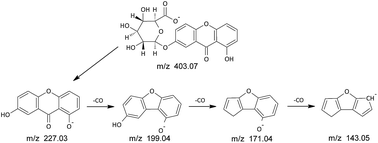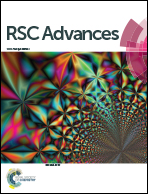Identification and characterization of the Indian Yellow dyestuff and its degradation products in historical oil paint tube by liquid chromatography mass spectrometry†
Abstract
An analytical protocol for identification of dyes using reversed phase liquid chromatography-mass spectrometry with atmospheric pressure electrospray ionization (LC-ESI/MS) is presented. The developed method has been successfully applied in identification of euxanthic acid and euxanthone, the main components of the Indian Yellow dye in a historical oil paint tube produced by Richard Ainès, a recognizable French company supplying art materials. The paint tube from which the sample has been taken belonged to a famous Polish painter from the 19th century – Jan Matejko. Various methods of extraction of the Indian Yellow dyestuff from the oil paint were systematically investigated. Efficiencies of the nine extraction procedures (based respectively on use of: HCl, HF, acetylacetone, and formic, tartaric, oxalic, trifluoroacetic and citric acids) were compared on the basis of euxanthic acid to euxanthone chromatographic peak areas ratio. It was found that use of HF, acetylacetone and the organic acids ensures a non-destructive recovery of intact acid-labile components, while the strong HCl mineral acid not only allowed extraction of the colorant from the binding medium, but also decomposes the glycosidic dye into the parent aglycon and causes a formation of methyl euxanthonate and numerous products which may hinder the proper identification of the dye. The Indian Yellow was fully characterized with the use of spectrochromatographic techniques for the first time. The fragmentation pathways of the identified colorant ions and their degradation products were proposed.


 Please wait while we load your content...
Please wait while we load your content...